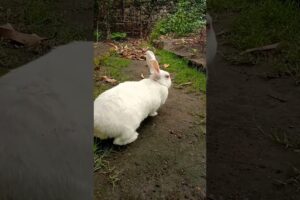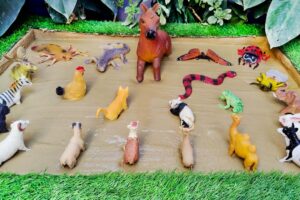Baby Reptiles – Cute and Funny Reptile Videos Compilation (2018) Reptiles Adorables Video Recopilación | Animal Planet Videos
? Subscribe Here: https://goo.gl/qor4XN
? 2nd Channel Here: https://goo.gl/SCE4Z9
Baby reptiles are cute and funny. Baby reptiles are awesome. Check out these cute baby reptiles and funny baby reptiles in this cute and funny baby reptiles videos compilation.
Los reptiles bebes son lindos y adorables. Los reptiles bebes son increíbles. Vea esta divertida recopilación graciosa de vídeos de reptiles bebes.
? VIDEO PLAYLISTS ?
? CATS ➞ https://goo.gl/Fn5hjw
? DOGS ➞ https://goo.gl/Ytjqj2
? OWLS ➞ https://goo.gl/hdMX44
? PANDAS ➞ https://goo.gl/VvSvW7
? TURTLES ➞ https://goo.gl/ZZeD4W
? ANIMALS ➞ https://goo.gl/UzfEuX
? PARROTS ➞ https://goo.gl/8P8m9v
? REPTILES ➞ https://goo.gl/B1mNe9
? MINI PIGS ➞ https://goo.gl/HooE6u
? MONKEYS ➞ https://goo.gl/ysT6w5
? HEDGEHOG ➞ https://goo.gl/AM4JvA
? RACCOONS ➞ https://goo.gl/39tNed
? OCEAN LIFE ➞ https://goo.gl/q8izcp
? GUINEA PIGS ➞ https://goo.gl/rtVDkv
? BABY ANIMALS ➞ https://goo.gl/At6vs2
? WILD ANIMALS ➞ https://goo.gl/25ZbvD
? NATURE IS AWESOME ➞ https://goo.gl/ViLfFF
? ANIMALS DOING THINGS ➞ https://goo.gl/ea14Rn
Reptiles are tetrapod animals in the class Reptilia, comprising today’s turtles, crocodilians, snakes, amphisbaenians, lizards, tuatara, and their extinct relatives. The study of these traditional reptile orders, historically combined with that of modern amphibians, is called herpetology.
Because some reptiles are more closely related to birds than they are to other reptiles (e.g., crocodiles are more closely related to birds than they are to lizards), the traditional groups of “reptiles” listed above do not together constitute a monophyletic grouping (or clade). For this reason, many modern scientists prefer to consider the birds part of Reptilia as well, thereby making Reptilia a monophyletic class.
The earliest known proto-reptiles originated around 312 million years ago during the Carboniferous period, having evolved from advanced reptiliomorph tetrapods that became increasingly adapted to life on dry land. Some early examples include the lizard-like Hylonomus and Casineria. In addition to the living reptiles, there are many diverse groups that are now extinct, in some cases due to mass extinction events. In particular, the Cretaceous–Paleogene extinction event wiped out the pterosaurs, plesiosaurs, ornithischians, and sauropods, as well as many species of theropods, including troodontids, dromaeosaurids, tyrannosaurids, and abelisaurids, along with many Crocodyliformes, and squamates (e.g. mosasaurids).
Modern non-avian reptiles inhabit every continent with the exception of Antarctica. (If birds are classed as reptiles, then all continents are inhabited.) Several living subgroups are recognized: Testudines (turtles and tortoises), approximately 400 species; Rhynchocephalia (tuatara from New Zealand), 1 species; Squamata (lizards, snakes, and worm lizards), over 9,600 species; Crocodilia (crocodiles, gavials, caimans, and alligators), 25 species; and Aves (birds), 10,000 species.
Reptiles are tetrapod vertebrates, creatures that either have four limbs or, like snakes, are descended from four-limbed ancestors. Unlike amphibians, reptiles do not have an aquatic larval stage. Most reptiles are oviparous, although several species of squamates are viviparous, as were some extinct aquatic clades— the fetus develops within the mother, contained in a placenta rather than an eggshell. As amniotes, reptile eggs are surrounded by membranes for protection and transport, which adapt them to reproduction on dry land. Many of the viviparous species feed their fetuses through various forms of placenta analogous to those of mammals, with some providing initial care for their hatchlings. Extant reptiles range in size from a tiny gecko, Sphaerodactylus ariasae, which can grow up to 17 mm (0.7 in) to the saltwater crocodile, Crocodylus porosus, which may reach 6 m (19.7 ft) in length and weigh over 1,000 kg (2,200 lb).
source







WIN AN ANIMAL PLANET HOODIE (Requirements, very important!!)
– Subscribe to the 2nd channel: https://goo.gl/SCE4Z9
– Subscribe to this channel: https://goo.gl/qor4XN
– Activate the notification bell.
– Like this video.
– Comment something related to the video, the more comments you have more chances to win you will have.
Monthly winners will appear on the channel banner on the 15th of each month. Good luck!! ?
9:14 So. Cute❤️❤️❤️❤️?
This video shows a lot of unhealthy, aggressive and not well cared of reptiles… ?
Is the dragon real?! 8:25
0:21 what kind of frog is dat brother
What has the world come to when they think that plants and frogs are reptiles, they label CGI creatures as cute/funny reptiles, they think that snakes eating other snakes is cute or funny and people flushing frogs down the toilet is cute or funny?
2:15 it so crazy
The Dragon is fake
Proof did was a lazy video 2:36
hey man , I am 6th uhh
2:18 That's kinda mean never mind that's REALLY MEAN she just threw it
6:17 rip
4:30 what is that
Do thet know what a reptile is?
Awww so cute
8:56 thats the most beautiful fish ive ever seen in my life!
1:47 That's not cute or funny…
1:35 не знаю кто это но уже хочу!
1:10 u know what gonna happen to the smol froggo next….
2:36:the guy records this and think it’s cute
I am gonna go John wick
this is not cute animals this is Disgusting
Wth was that at the time 4 31
Down one is Father ?
Middle one is Mother ?
Top one is son/daughter ?
3:21
I need a newt
3:04
EARTHWORM SALLY NO
0:12 это же лунтик
*literally sees like 2 baby reptiles- also sees mammals and sea animals
8:26 dis can’t be real ?
4:33 name?
Title:cute reptile 15 seconds in a axolotl appears and the title is cute reptiles?
What was that at 4.32 to 4.36
0:12 polite lizard
Cute
Crab is not a reptile
1:08 what is that!? 0_0 ??
See life is very beautifull
This video should be called weird and violent videos of animals
Literally the title is cute reptiles if it's so cute what is this 2:36????
are dragon real